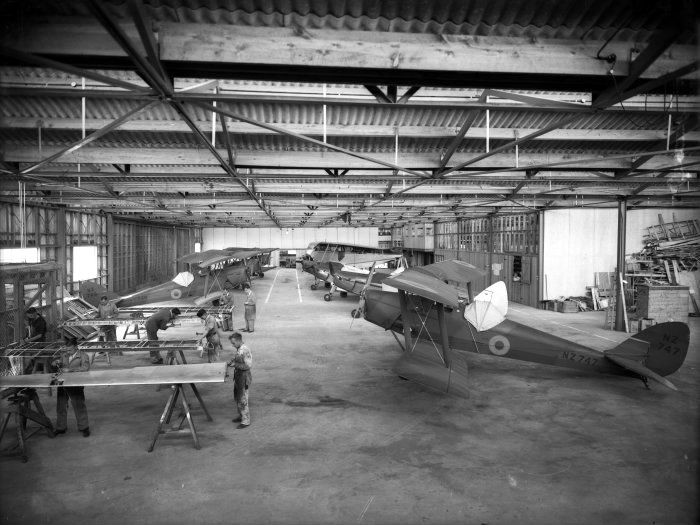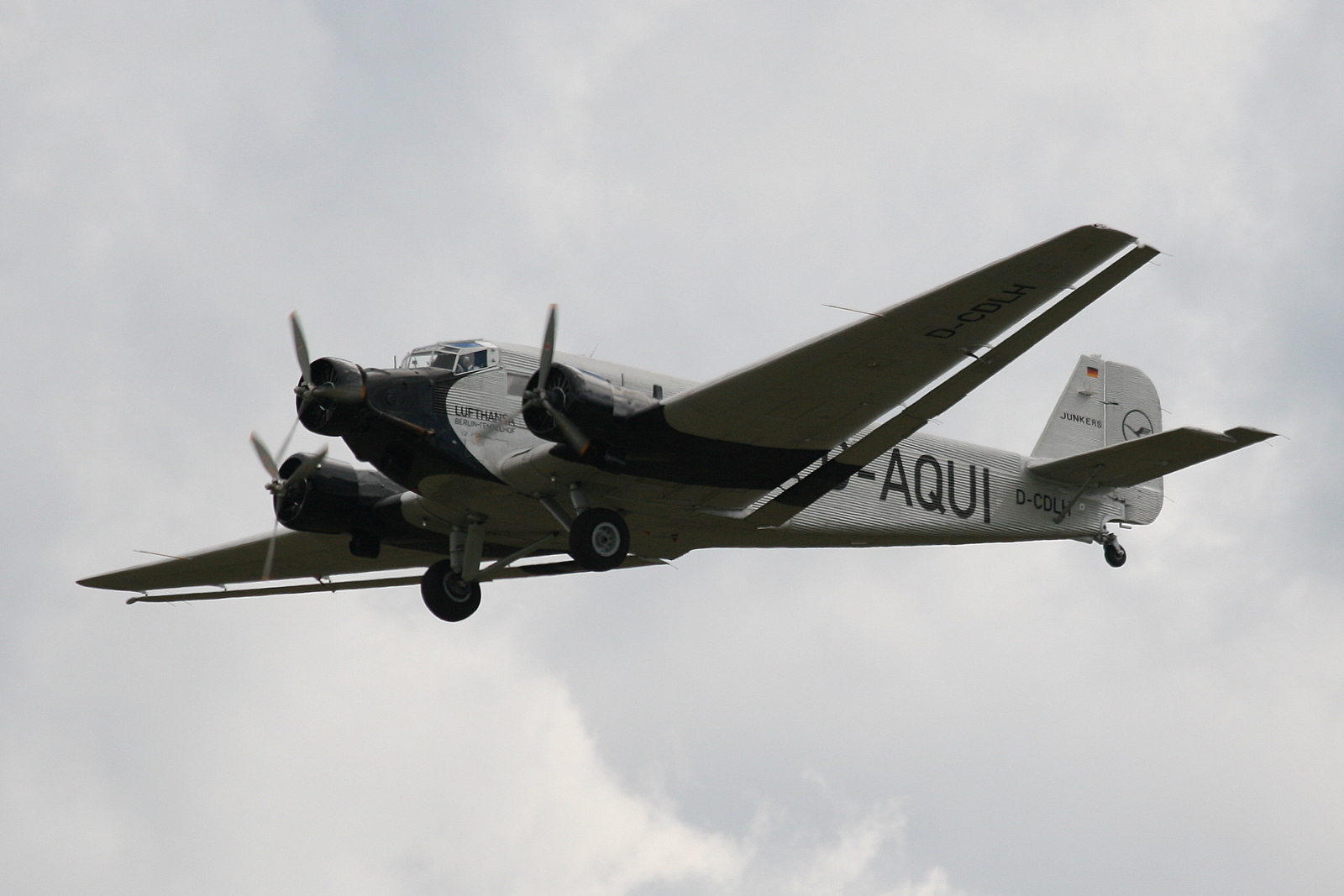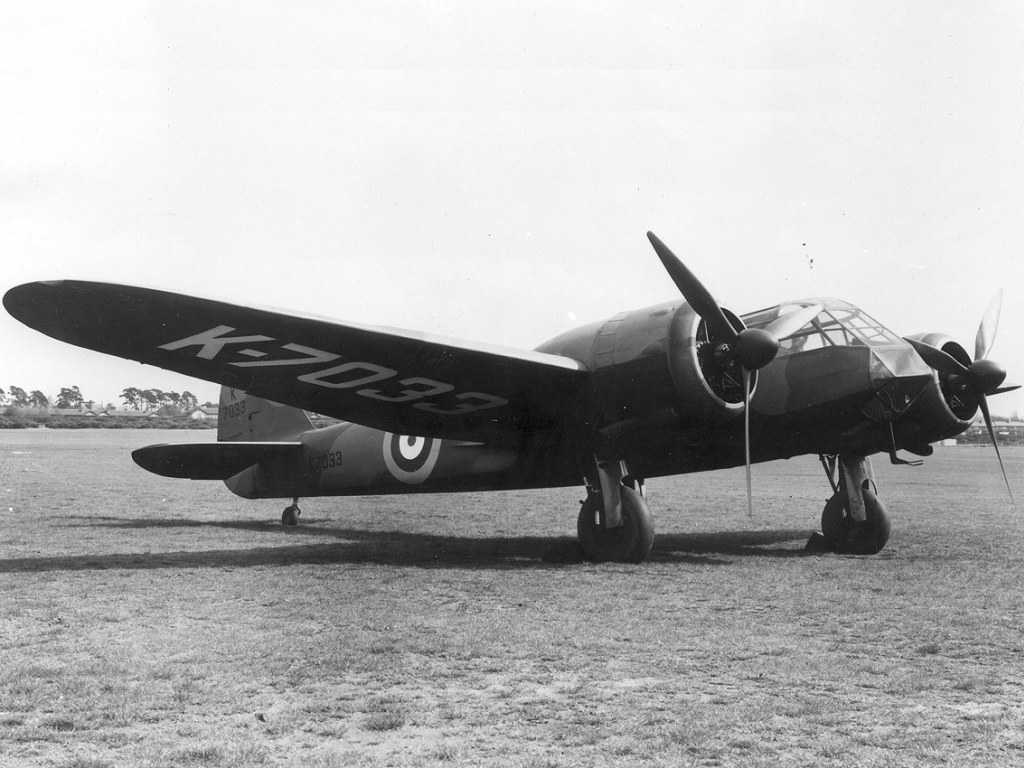|
Richard Haine
Group Captain Richard Cummins Haine, (1 October 1916 – 30 September 2008) was a British pilot and a Royal Air Force officer from 1936 to 1970. He received the Distinguished Flying Cross for his actions during the Second World War, including the first night fighter defence over Britain, and was involved in the first fighter attack of the war on German territory. Haine served as the commanding officer of No. 488 Squadron RNZAF in 1944. Early life Haine was born in Gloucester on 1 October 1916 and matriculated from the Crypt Grammar School. While at school, he got his first taste of flight in an Avro 504 biplane trainer of Cobham's Flying Circus, which made him determined to fly. He spent his youth making aeroplane models and obsessing about flying. When he left school, he became an apprentice at the Gloster Aircraft Company and joined a local flying club, soloing in a Tiger Moth in 1935. Military service Haine joined the Royal Air Force (RAF) in 1936 and qualified as a fighter ... [...More Info...] [...Related Items...] OR: [Wikipedia] [Google] [Baidu] |
Gloucester
Gloucester ( ) is a cathedral city and the county town of Gloucestershire in the South West of England. Gloucester lies on the River Severn, between the Cotswolds to the east and the Forest of Dean to the west, east of Monmouth and east of the border with Wales. Including suburban areas, Gloucester has a population of around 132,000. It is a port, linked via the Gloucester and Sharpness Canal to the Severn Estuary. Gloucester was founded by the Romans and became an important city and '' colony'' in AD 97 under Emperor Nerva as '' Colonia Glevum Nervensis''. It was granted its first charter in 1155 by Henry II. In 1216, Henry III, aged only nine years, was crowned with a gilded iron ring in the Chapter House of Gloucester Cathedral. Gloucester's significance in the Middle Ages is underlined by the fact that it had a number of monastic establishments, including: St Peter's Abbey founded in 679 (later Gloucester Cathedral), the nearby St Oswald's Priory, Glo ... [...More Info...] [...Related Items...] OR: [Wikipedia] [Google] [Baidu] |
Tiger Moth
The de Havilland DH.82 Tiger Moth is a 1930s British biplane designed by Geoffrey de Havilland and built by the de Havilland Aircraft Company. It was operated by the Royal Air Force (RAF) and other operators as a primary trainer aircraft. In addition to the type's principal use for ''ab initio'' training, the Second World War had RAF Tiger Moths operating in other capacities, including maritime surveillance and defensive anti-invasion preparations; some aircraft were even outfitted to function as armed light bombers. The Tiger Moth remained in service with the RAF until it was replaced by the de Havilland Chipmunk during the early 1950s. Many of the military surplus aircraft subsequently entered into civilian operation. Many nations have used the Tiger Moth in both military and civilian applications, and it remains in widespread use as a recreational aircraft. It is still occasionally used as a primary training aircraft, particularly for those pilots wanting to gain expe ... [...More Info...] [...Related Items...] OR: [Wikipedia] [Google] [Baidu] |
Junkers Ju 52
The Junkers Ju 52/3m (nicknamed ''Tante Ju'' ("Aunt Ju") and ''Iron Annie'') is a transport aircraft that was designed and manufactured by German aviation company Junkers. Development of the Ju 52 commenced during 1930, headed by German Aerospace engineering, aeronautical engineer Ernst Zindel. The aircraft's design incorporated a wikt:corrugated, corrugated duralumin metal skin as a strengthening measure, which was very unusual at the time. The Ju 52's maiden flight was performed on 13 October 1930. It was initially designed with a single engine, however, it was produced in quantity as a trimotor. The primary early production model, the ''Ju 52/3m'', was principally operated as a 17-seat airliner or utility transport aircraft by various civil operators during the 1930s. Following the rise of Nazi Germany, thousands of Ju 52s were procured as a staple military transport of the nation. The ''Ju 52/3mg7e'' was the principal production model. The Ju 52 was in production between 1 ... [...More Info...] [...Related Items...] OR: [Wikipedia] [Google] [Baidu] |
Waalhaven
Waalhaven Airport in 1932, with the Graf Zeppelin in the background. The Waalhaven is a harbour in Rotterdam, the Netherlands. It used to be home to an airport, Vliegveld Waalhaven (Waalhaven Airport). It was the second civilian airport in the Netherlands and was opened in 1920. Part of it was also in use by the Dutch military's 3rd JaVA Fokker G.I The Fokker G.I was a Dutch twin-engined heavy fighter aircraft comparable in size and role to the German Messerschmitt Bf 110. Although in production prior to World War II, its combat introduction came at a time the Netherlands were overrun by t ... squadron in 1940. Amongst others, the N.V. Koolhoven aircraft factory was located at this airport. The factory and airport were destroyed in 1940 by the Dutch army so it could not get into the hands of the Germans. After the Second World War, the city was in a prospect of finding an airport, but the existing airfield at Waalhaven was written off the list, because the damage that was ca ... [...More Info...] [...Related Items...] OR: [Wikipedia] [Google] [Baidu] |
Heinkel He 59
The Heinkel He 59 was a twin-engined German biplane designed in 1930, resulting from a requirement for a torpedo bomber and reconnaissance aircraft able to operate on wheeled landing gear or twin-floats. Development In 1930, Ernst Heinkel began developing an aircraft for the ''Reichsmarine''. To conceal the true military intentions, the aircraft was officially a civil aircraft. The He 59B landplane prototype was the first to fly, an event that took place in September 1931,Green 1962, p.68 but it was the He 59A floatplane prototype that paved the way for the He 59B initial production model, of which 142 were delivered in three variants. The Heinkel He 59 was a pleasant aircraft to fly; deficiencies noted were the weak engine, the limited range, the small load capability and insufficient armament. Design The aircraft was of a mixed-material construction. The wings were made of a two-beam wooden frame, where the front was covered with plywood and the rest of the wing was covered w ... [...More Info...] [...Related Items...] OR: [Wikipedia] [Google] [Baidu] |
Borkum
Borkum ( nds, Borkum, Börkum) is an island and a municipality in the Leer District in Lower Saxony, northwestern Germany. It is situated east of Rottumeroog and west of Juist. Geography Borkum is bordered to the west by the Westerems strait (which forms the border with the Netherlands), to the east by the Osterems strait, to the north by the North Sea, and to the south by the Wadden Sea. It is the largest and westernmost of the East Frisian Islands in the North Sea, due north of the Dutch province of Groningen. The island was formed in 1863 by two previously separate islands which were still separated by a shallow water. The seam between the former eastern and western parts is called ''Tüskendör'' ("through in between"). Climate Borkum is the only East Frisian island that is under the influence of the North Sea all year round thanks to its distance from the mainland. The maritime climate is influenced by the Gulf Stream and the west wind zone with correspondingly high ... [...More Info...] [...Related Items...] OR: [Wikipedia] [Google] [Baidu] |
RAF Northolt
("Ready to carry or to fight") , pushpin_map = Greater London , pushpin_label = RAF Northolt , pushpin_map_caption = Shown within Greater London , coordinates = , type = Royal Air Force station , code = , site_area = , height = , ownership = Ministry of Defence , operator = Royal Air Force , controlledby = No. 2 Group (Air Combat Support) , condition = , built = , builder = , used = 1915–present , materials = , fate = , battles = , events = , current_commander = , past_commanders = , garrison = , occupants = * No. 32 (The Royal) Squadron * No. 63 Squadron RAF Regiment * No. 600 Squadron (RAuxAF) * No. 38 Expeditionary Air Wing * HQ RAF Music Services * Central Band of the RAF * Band of the Royal Air Force Regiment * 621 Explosive Ordnance Disposal Squadron * British Forces Post Office * No. 1 Aeronautical Information Documents Unit * Service Prosecution Authority , open_to_public = , website = , IATA =NHT , ICAO =EGWU , FAA = , TC = , LID ... [...More Info...] [...Related Items...] OR: [Wikipedia] [Google] [Baidu] |
Night Fighter
A night fighter (also known as all-weather fighter or all-weather interceptor for a period of time after the Second World War) is a fighter aircraft adapted for use at night or in other times of bad visibility. Night fighters began to be used in World War I and included types that were specifically modified to operate at night. During the Second World War, night fighters were either purpose-built night fighter designs, or more commonly, heavy fighters or light bombers adapted for the mission, often employing radar or other systems for providing some sort of detection capability in low visibility. Many night fighters of the conflict also included instrument landing systems for landing at night, as turning on the runway lights made runways into an easy target for opposing intruders. Some experiments tested the use of day fighters on night missions, but these tended to work only under very favourable circumstances and were not widely successful. Avionics systems were greatly mini ... [...More Info...] [...Related Items...] OR: [Wikipedia] [Google] [Baidu] |
Bristol Blenheim
The Bristol Blenheim is a British light bomber aircraft designed and built by the Bristol Aeroplane Company (Bristol) which was used extensively in the first two years of the Second World War, with examples still being used as trainers until the end of the war. Development began with the ''Type 142'', a civil airliner, in response to a challenge from Lord Rothermere to produce the fastest commercial aircraft in Europe. The ''Type 142'' first flew in April 1935, and the Air Ministry, impressed by its performance, ordered a modified design as the ''Type 142M'' for the Royal Air Force (RAF) as a bomber. Deliveries of the newly named Blenheim to RAF squadrons commenced on 10 March 1937. In service the Type 142M became the Blenheim Mk.I which would be developed into the longer Type 149, designated the Blenheim Mk.IV, except in Canada where Fairchild Canada built the Type 149 under licence as the Bolingbroke. The Type 160 Bisley was also developed from the Blenheim, but was already o ... [...More Info...] [...Related Items...] OR: [Wikipedia] [Google] [Baidu] |
Gloster Gladiator
The Gloster Gladiator is a British biplane fighter. It was used by the Royal Air Force (RAF) and the Fleet Air Arm (FAA) (as the Sea Gladiator variant) and was exported to a number of other air forces during the late 1930s. Developed privately as the Gloster SS.37, it was the RAF's last biplane fighter aircraft, and was rendered obsolete by newer monoplane designs even as it was being introduced. Though often pitted against more formidable foes during the early days of the Second World War, it acquitted itself reasonably well in combat. The Gladiator saw action in almost all theatres during the Second World War, with a large number of air forces, some of them on the Axis side. The RAF used it in France, Norway, Greece, the defence of Malta, the Middle East, and the brief Anglo-Iraqi War (during which the Royal Iraqi Air Force was similarly equipped). Other countries deploying the Gladiator included China against Japan, beginning in 1938; Finland (along with Swedish voluntee ... [...More Info...] [...Related Items...] OR: [Wikipedia] [Google] [Baidu] |
Hawker Demon
The Hawker Hart is a British two-seater biplane light bomber aircraft that saw service with the Royal Air Force (RAF). It was designed during the 1920s by Sydney Camm and manufactured by Hawker Aircraft. The Hart was a prominent British aircraft in the inter-war period, but was obsolete and already side-lined for newer monoplane aircraft designs by the start of the Second World War, playing only minor roles in the conflict before being retired. Several major variants of the Hart were developed, including a navalised version for the Royal Navy's aircraft carriers. Beyond Britain, the Hart would be operated by a number of foreign nations, including Sweden, Yugoslavia, Estonia, South Africa, and Canada. Design and development In 1926, the Air Ministry stated a requirement for a two-seat high-performance light day-bomber, to be of all-metal construction and with a maximum speed of 160 mph (258 km/h). Designs were tendered by Hawker, Avro and de Havilland. Fairey, who ha ... [...More Info...] [...Related Items...] OR: [Wikipedia] [Google] [Baidu] |
_drawn_and_engraved_under_the_direction_of_Edward_Wedlake_Brayley.jpg)



.png)




